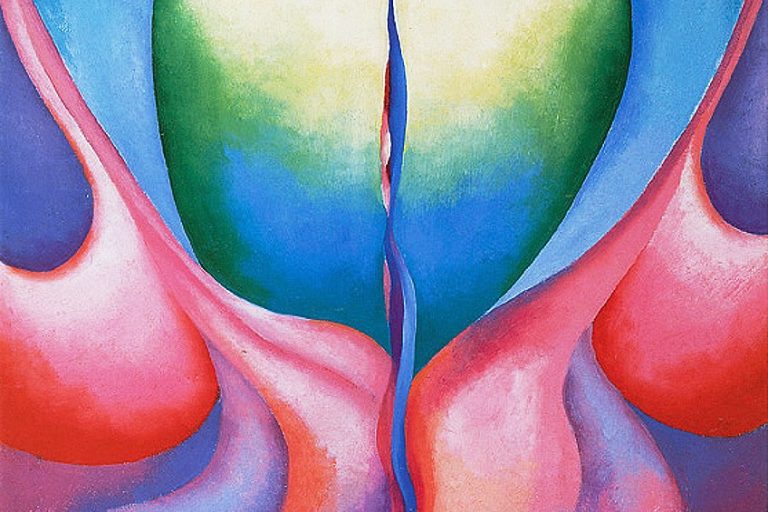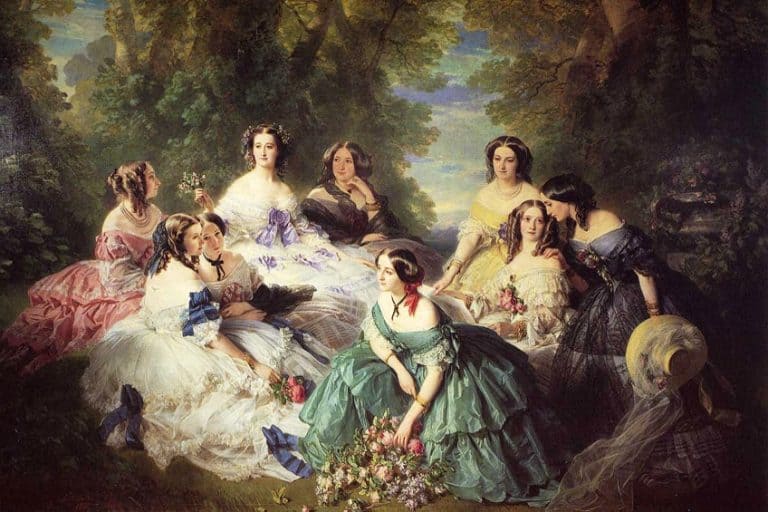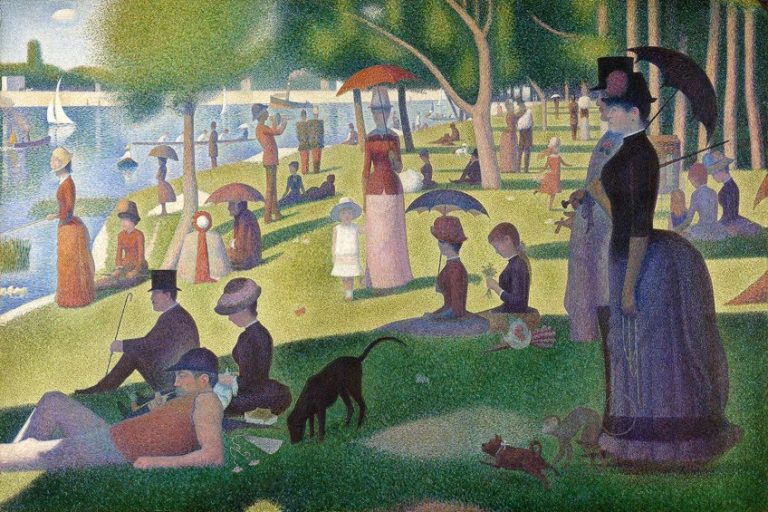Egyptian Art – The Rich Art History of Ancient Egypt
Egyptian art is widely considered to be one of the most striking art forms to ever exist. The most well-known examples of Egyptian art that have survived to this day were produced between the 31st century B.C. and the 4th century A.D. Despite seeming antiquated, as art is no longer produced in the same way, ancient Egyptian art remains a fascinating genre to learn about, as the purpose of art then differed greatly in comparison to what art stands for today.
Why Was Egyptian Art So Important?
The artworks that have come from ancient Egypt have been a topic of great captivation and obsession for people for thousands of years. This is partly due to the techniques of Egyptian art having inspired both Greek and Roman artists who were influenced by the remarkable sculptures, paintings, drawings, jewelry, and architectural structures that were made.
It has been said that even artworks of certain cultures existing in the present day have been swayed by the talents of Egyptian art, demonstrating its worldwide impact.
As very little outside influence was able to sway the characteristics of Egyptian art, most of the artworks that were made remained exceptionally stable during the genre’s almost 3000-year period. The anonymity associated with artists was an important element within the production of ancient Egyptian art, as most of them remain unknown to this day. This was due to the fact that art was more functional as opposed to aesthetic, as it was essentially created for a practical purpose.
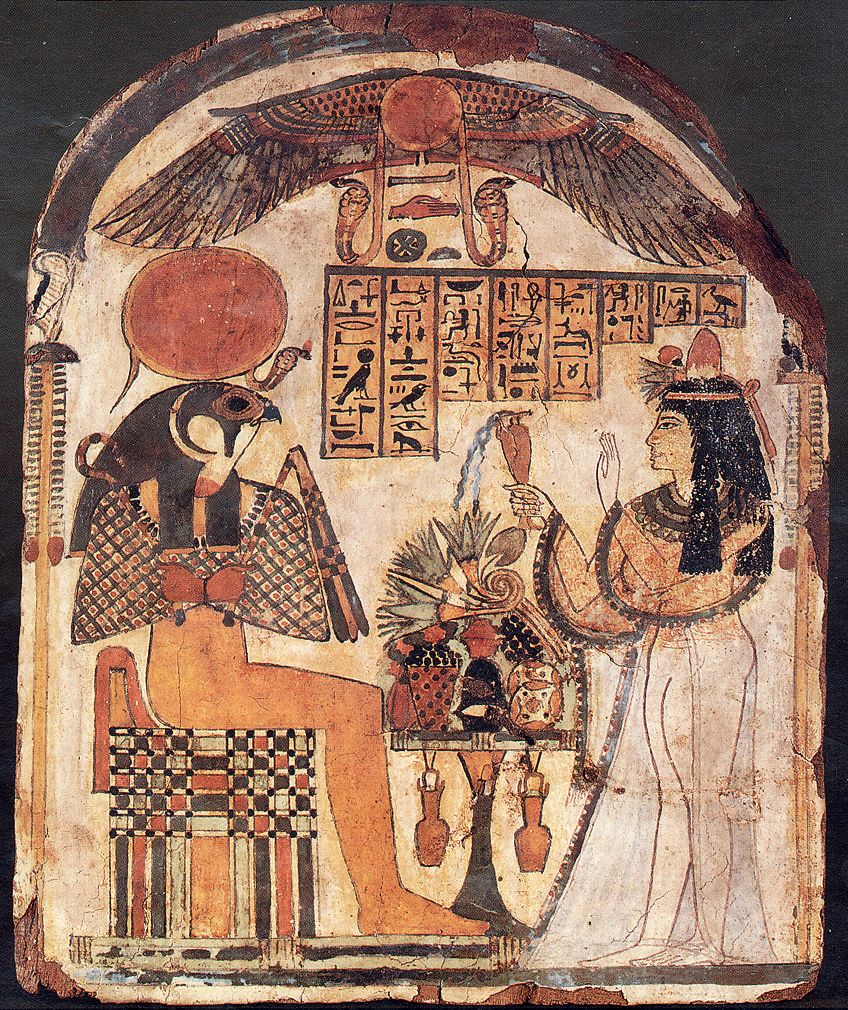
While more artists from the later periods of Egyptian art are known by name, the artworks that still hold the greatest attractions are those that were made centuries ago by unidentified creatives. This element of curiosity has also added to the great intrigue plaguing ancient Egyptian art for so long, as the artworks differ greatly from the type of art that is typically produced today.
In order to recognize the significance of Egyptian art, it is important to view the artworks from the perspective of the ancient Egyptians themselves.
Despite all of the numerous exhibitions that have featured Egyptian art throughout the years, the artists of the work would never have understood the relevance of placing their work completely out of context in a museum. This was because art was traditionally made to adorn tombs and was typically reserved for the wealthy who could afford to commission such pieces.
As time went on, ancient Egyptian art reached a substantial level of elegance, with the tombs, temples, tomb paintings, sculptures, and inscriptions becoming very stylized and symbolic. This was to emphasize the fact that ancient art served a primarily useful purpose, such as tomb art that represented scenes from one’s life on earth so that one’s spirit would be able to recall it. Due to this, the majority of Egyptian history and civilization has come to be known through the artworks that have been found, which further indicates their importance.

However, as only the elite could afford such art, the pieces that have been found are mostly concerned with the lives of the upper class. It is only through understanding these pieces and stories that those of the lower classes have been exposed, which demonstrated the complexity of ancient Egyptian art.
As most of the remaining art that exists today has been found in tombs and monuments, greater attention on life after death and the conservation of prior information can be seen. Thus, understanding the importance of Egyptian art lies in appreciating what the artworks were actually created for, as they served a vastly different purpose when compared to the types of art that exist today.
What Did Ancient Egyptian Art Stand For?
Within any type of civilization, art has been seen as a fundamental aspect throughout the centuries. Egypt is no different, with the introduction of artworks being traced back to the Predynastic Period between 6000 and 3150 B.C.E. Images of animals, humans, and mystical figures have been found etched onto rock walls, which represents the estimated origin of art within ancient Egypt. While these depictions are seen as unrefined in comparison to the subsequent developments of art, they all express the important Egyptian value of balance.
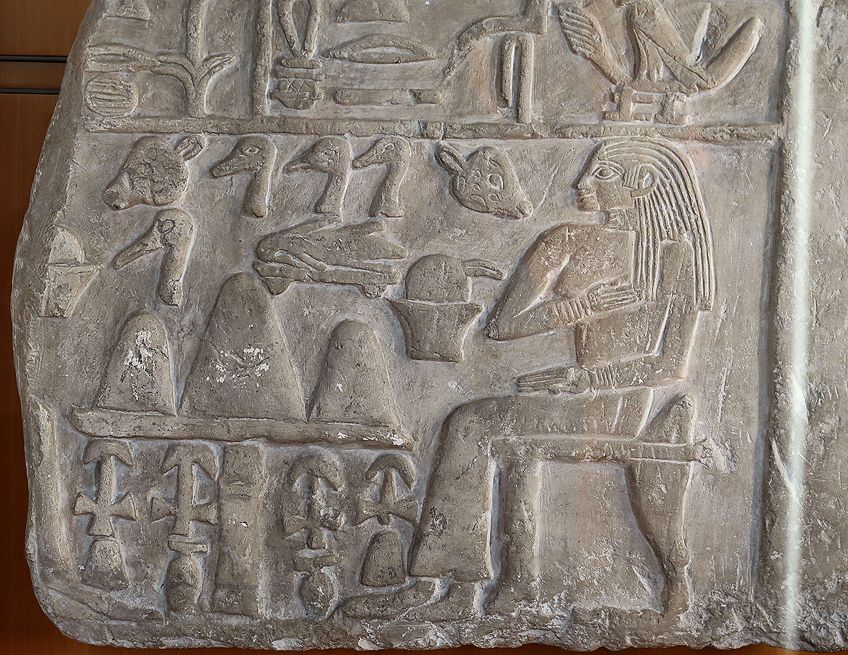
Starting from the Early Dynastic Period until Roman Egypt when Christianity came in, the type of Egypt art included ivory sculptures, paintings, papyrus drawings, faience, and jewelry. Additionally, architecture was experimented with, which can be seen in the iconic pyramids and temples that Egypt is typically known for. Despite so much time passing between the introduction of ancient Egyptian art, the style has remained quite conservative and has changed relatively little in comparison to other art forms.
The majority of the surviving art that is known about and on display today has come from the excavation of certain tombs and monuments.
Through this, society has been given more information and understanding into the afterlife principles that were held by the ancient Egyptians. For example, the charms and amulets found in these sites were said to protect the deceased from danger, while the figurines protected them from evil spirits and angry ghosts.
Additionally, the tomb paintings were said to depict scenes from the paradise that those wished to find in the afterlife, with the paintings existing as a type of map to help the departed find their way. Based on this, we can understand why the artworks produced by the ancient Egyptians served a function as opposed to simply being viewed. As Egyptian artwork was primarily bound in religion and ideology, artists portrayed a very idyllic and unrealistic view of the world as no specific artistic expression existed since art served a wider purpose.
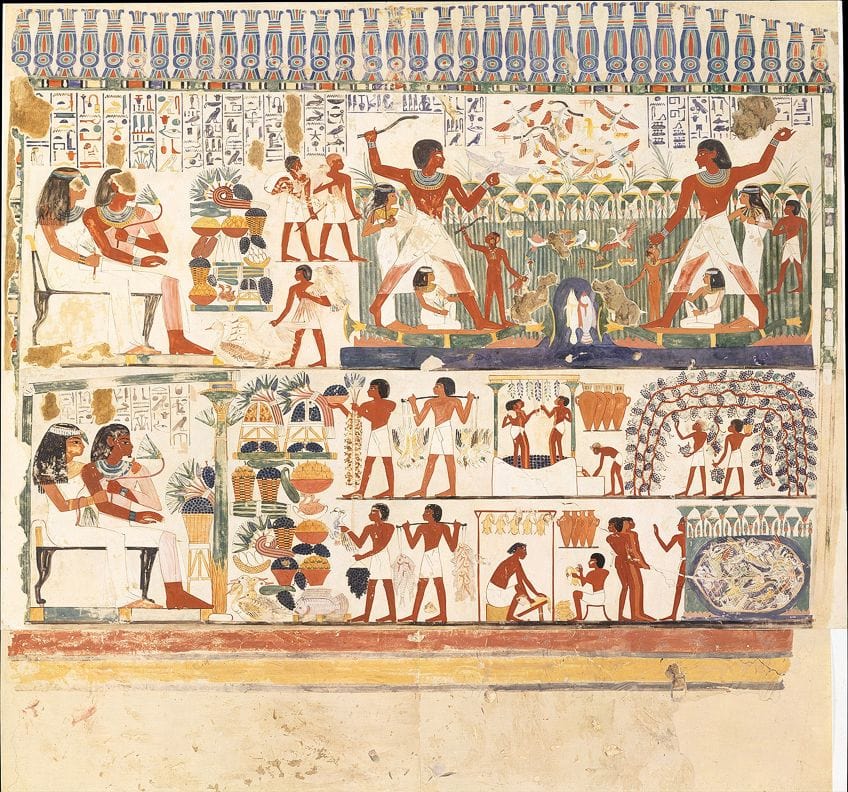
As an art form, aesthetic beauty was not the incentive behind the creation of most Egyptian artwork. At the time, Egyptian society was based on the notion of harmony, also known as “ma’at”. This led to Egyptian art being created in perfect balance because it reflected the ideal world of gods.
No matter how beautifully an artwork was crafted, its purpose to serve as a home for a spirit or god was of the utmost importance. Their function was to exist as a reminder of the everlasting nature of life and the value of personal and collective stability.
Appreciating and Understanding Ancient Egyptian Art
In order to truly understand the purpose of ancient Egyptian art, the artworks need to be looked at from the perspective of the Egyptians who produced them. This was because the art of the Egyptians served a significantly different intention to the art of later cultures and today, as traditional Egyptian art prioritized function over form. This led to the creation of artworks that were quite stable and conventional in design but were also unusually abstract and stocky. Due to this, unflattering comparisons to later styles of Greek and Renaissance art were made, as these artworks were more naturalistic in nature.
The comparisons made demonstrated the uniquely different properties that Egyptian art subscribed to when contrasted against other forms of art, which indicated the importance of understanding the aim of Egyptian artwork.
Art Not Meant for Public Viewing
While the artworks that are produced today are generally made to be viewed by an audience, ancient Egyptian art differed greatly in this regard. Despite the world marveling at the dazzling treasures found in the tomb of Tutankhamun and the breathtaking reliefs within the New Kingdom tombs, it is important to remember that ancient Egyptian art was never intended to be seen by others. These artworks were solely made for the deceased, as their only purpose was to guide the spirit in the afterlife and decorate the tomb.

The Use of Text and Image
A feature that is quite remarkable about Egyptian art is that text was attached to almost all of the images produced. This is most notably seen in the statues and relief paintings created, as hieroglyphics were attached to these works. On the statues, identifying and explanatory text usually appeared on the back pillar or base that supported the work, while relief paintings and panels tended to have longer captions that explained and completed the stories in the scenes.
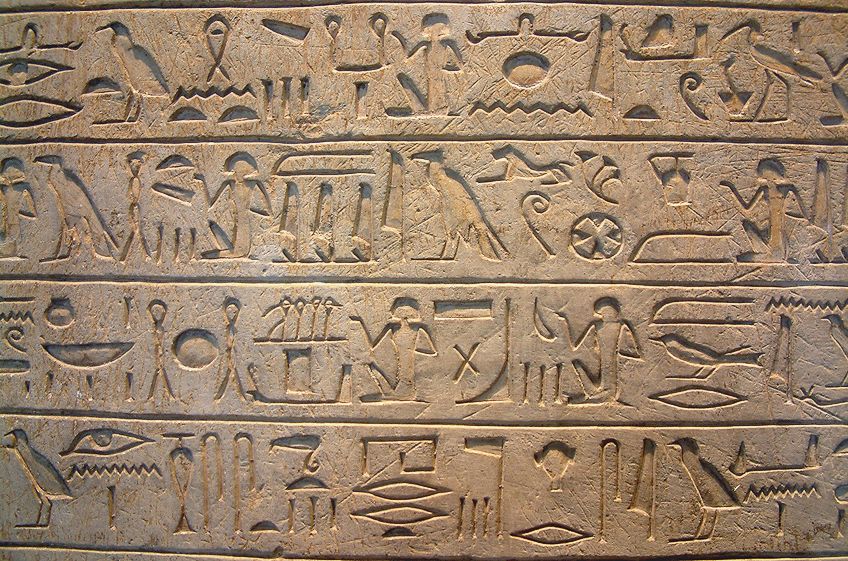
Hieroglyphs were also seen as artworks in and of themselves, despite these small inscriptions not always standing for what they depicted. Traditionally, hieroglyphs were phonetic sounds that were used to explain the images they were connected to. However, they were sometimes logographic in nature, as they represented the actual object and concept in word form.
Despite this, a fine line existed between text and images in many cases.
This was because the name of a figure in the text of the statue frequently left out the determinative, which was an implicit sign that aided in identification. For example, all verbs of motion were usually followed by a pair of walking legs to further demonstrate the meaning of the hieroglyph.
The Importance of Scale
In order to accurately convey hierarchy within ancient Egyptian artworks, differences in scale stood out as the most commonly used method. Through this use of difference, one could assume that the larger the scale of the figure, the more important that specific individual was. As a result of this, kings were most commonly shown to be the same scale as deities, as both figures were traditionally depicted as larger and more elite than common Egyptian individuals.
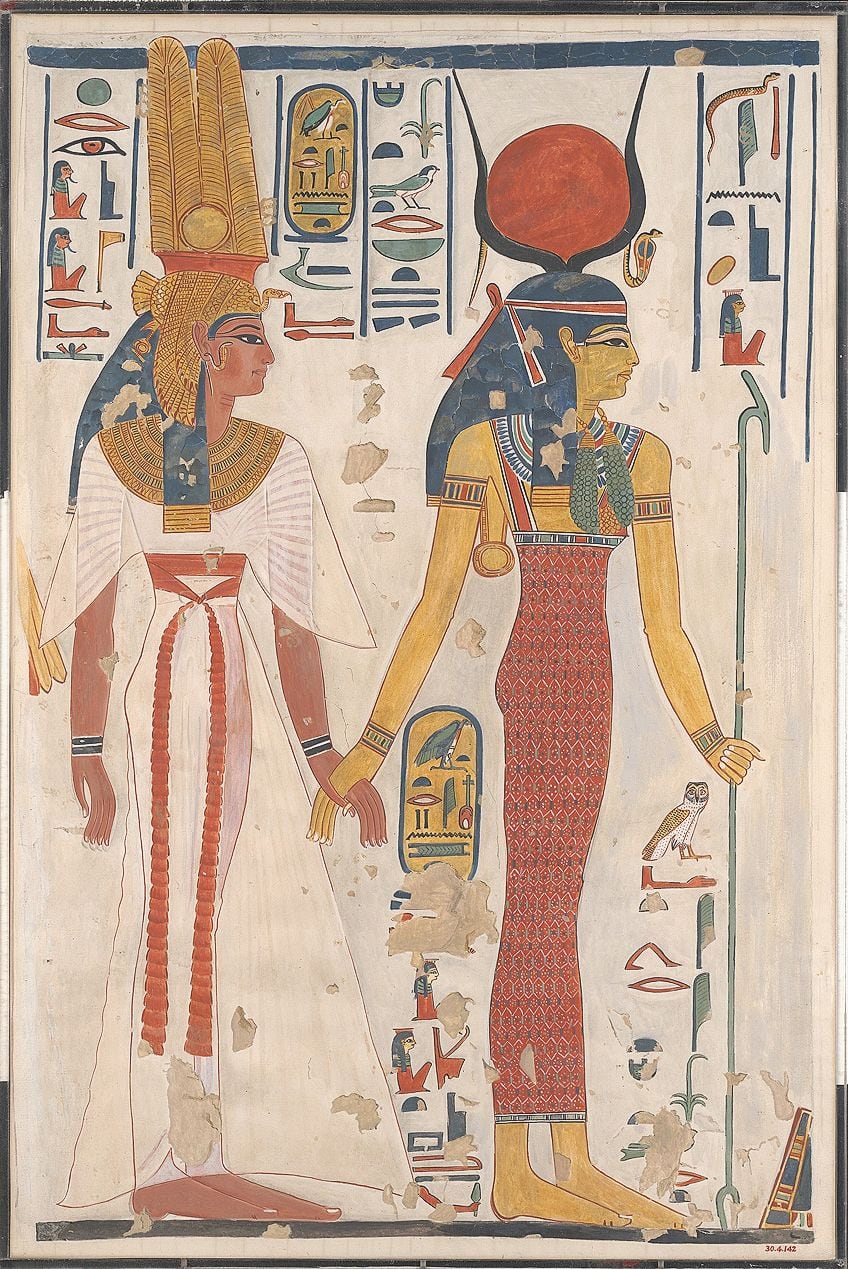
The Function of Egyptian Art
No matter what type of artworks were produced, such as statues or relief paintings, they were all intended for the same purpose. All artworks were essentially created to serve in the interest of a heavenly or departed recipient, as they provided a place for the individual to manifest and receive the full benefits of ritual actions.
For example, the majority of statues demonstrated a formal frontality. This meant that they were organized straight ahead so as to directly face the ritual of saying goodbye to a loved one that happened right in front of them.
No matter if statues were holy, imperial, or elite, they all worked to provide a type of channel for the spirit of the deceased that allowed them to interact with the temporal world. These statues were seen as mediators that existed between the worlds of the people and the gods, which enabled a form of communication to take place so that both sides were never forgotten.
The Impact of Two-Dimensional Art
Ancient Egyptian art made use of both two-dimensionality as well as three-dimensionality in the artworks that were created. As both forms differed greatly, two-dimensional art was said to present the most representative aspects of each component in the scenes as opposed to creating artworks that merely replicated the physical world. In order to create these dazzling two-dimensional artworks, each element within a scene was depicted from its most distinguishable angle and then later grouped together in order to make the whole.
This was why the angles of humans appeared strange, as the face, waist, and limbs were typically shown in profile while the eye and shoulders were represented frontally. Despite being seen as quite complicated, two-dimensional depictions provided complete information about the different elements included to create a very comprehensive image.
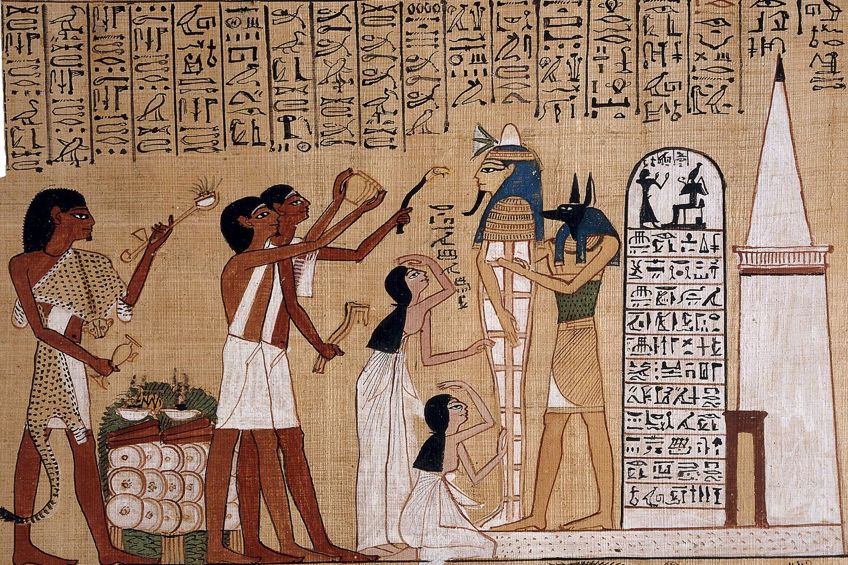
The Impact of Three-Dimensional Art
In comparison, three-dimensional art worked to produce the most lifelike and realistic depiction of the real world as possible. Due to this, these artworks were seen as very formal in nature, as statues of the gods, royalty, and the elite was designed to project an idealized and romanticized version of that individual. Aspects of naturalism were also seen, yet this depended on the type of material used as different materials were able to lend themselves in various ways to certain positions.
For example, stone statues appeared to be very closed-off and tight, as the arms of the figures were typically shown to be held close to their sides. This represented their limited room, as the only bits of space that were seen were in between the areas left open between the back supporting pillar and the figure’s limbs.
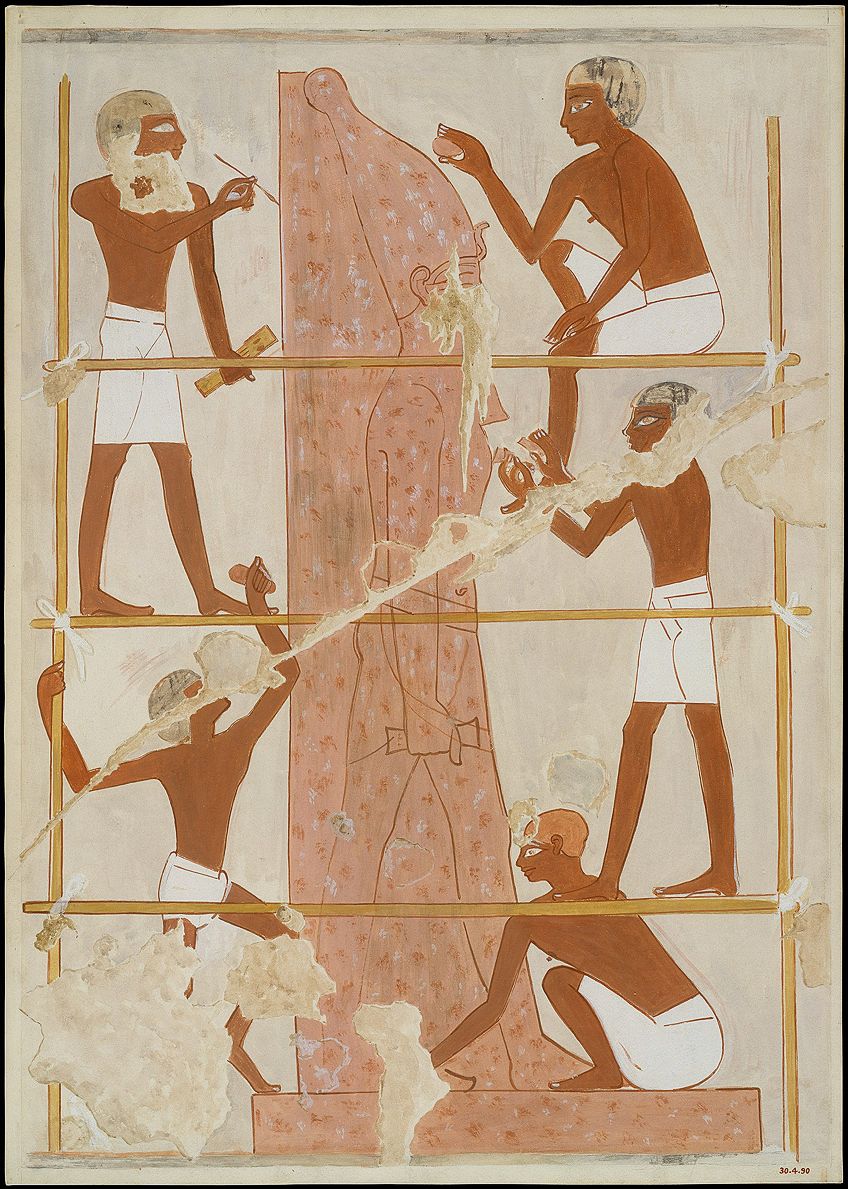
By contrast, wood and metal statues were more expressive, as the arms of statues were able to be extended and fully opened up. Additionally, these statues had more spaces between their limbs and were even found to be holding few objects as well, which gave them a more realistic appearance.
Despite the different materials used, all three-dimensional statues served the same purposes and maintained an identical type of formalization and frontality.
The Chronology of Egyptian Art
The artworks produced in Egypt have an incredibly long history, as the majority of the pieces date back thousands of years ago. Due to this, the two general periods that Egyptian artwork has been classified into are the pre-dynastic Egyptian art period and the early dynastic Egyptian art period. Below, we will be taking a look at the different types of art genres and cultures that made up each period.

Pre-Dynastic Egyptian Art (6000 – 3000 B.C.)
Spanning for approximately 3000 years, the pre-dynastic Egyptian art period was made up of three dominant cultural eras: the Merimde culture, the Badarian culture, and the Naqada culture. Often compared to the Neolithic period of art, pre-dynastic Egyptian art was named after the various areas where certain types of Egyptian settlements were discovered.
As Egyptians began to settle along the Nile river and adopt more of an inactive lifestyle during the Neolithic period, very little archeological evidence has been found for the years preceding 6000 B.C. However, as Egypt entered into the pre-dynastic era, more settlements began to appear, which accounted for the vast majority of the pre-dynastic archeological artworks that were found within Upper Egypt.
Early Dynastic Egyptian Art (c. 3150 – 2686 B.C.)
As more artworks date back to the early dynastic period, more information is known about this artistic era in Egypt. Emerging after the amalgamation of Lower and Upper Egypt around 3100 B.C., the early dynastic period is generally included as part of the First and Second Dynasties, which lasted until the start of the Old Kingdom during 2700 B.C.
At this point in Egyptian art, the defining characteristics of all ancient Egyptian civilizations, including art, architecture, and religion, began to take form during this period.
The majority of Egyptian art within this period revolved around the themes of permanence and preservation, as artists attempted to safeguard and conserve everything in as much of a fixed way as possible. This led artists to produce sculptures and relief paintings that portrayed gods, humans, courageous battles, and nature, as these were meant to provide some form of comfort to the deceased in the afterlife.

The common aesthetic practices of symbolism, balance, and symmetry that were all used to create the iconic Egyptian artworks renowned today were formalized during the early dynastic period. These values infused Egyptian paintings and sculptures from the earliest periods of art, with rock art existing as a good example of this.
During the pre-dynastic period, rock art emerged but was not really understood according to the dominant artistic elements, until it was fully realized in the early dynastic period.
Artworks from the early dynastic period reached their peak in an archeological sculpture that was known as The Narmer Palette, dating between 3200 and 3000 B.C.E. This artwork clearly demonstrated and celebrated the unity between Upper and Lower Egypt under King Narmer’s rule. The engravings on the slab told the story of King Narmer’s victory over his enemies and how the gods supported his actions.
Characteristics of Egyptian Art
Throughout history, Egypt art has typically been known for its unique figure convention that has been used to depict the main figures seen in both relief sculptures and paintings. Egyptian art has made meticulous use of hierarchical proportions which have gone on to characterize and identify their works as important pieces of art. This has also aided in the further understanding of ancient Egyptian artworks, as certain attributes exist as significant features that define and set their works apart from others.
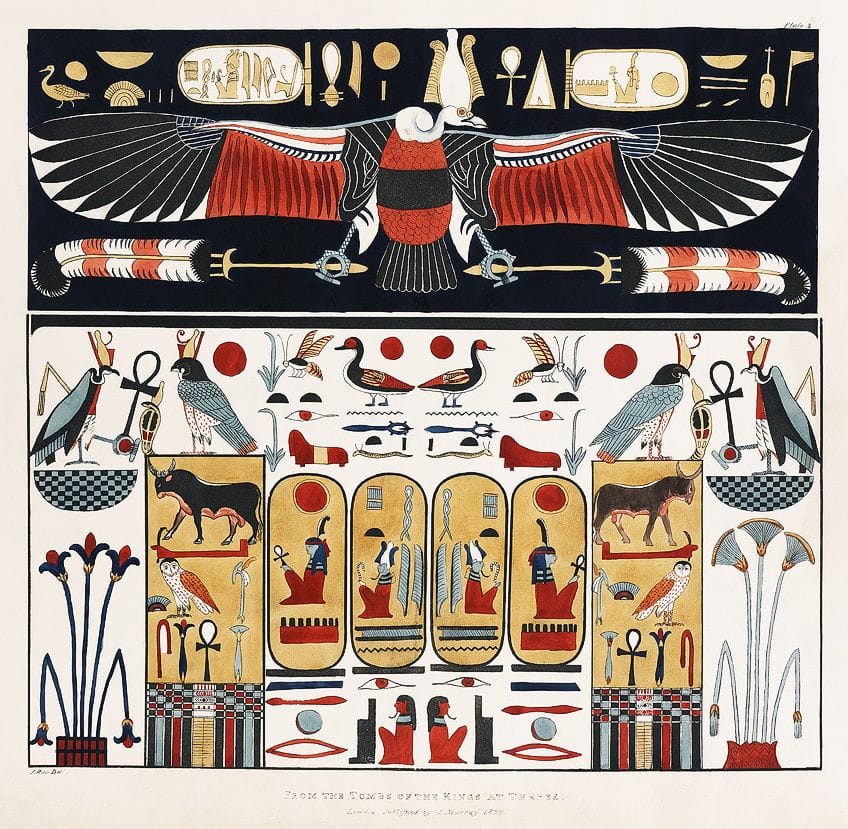
An illustration by Giovanni Battista Belzoni (1778-1823) of Plates reminiscent of the researches and operations taking place in Egypt and Nubia. The upper part represents the Eagle illustration from the king’s tombs in Thebes; Free Public Domain Illustrations by rawpixel, CC BY 2.0, via Wikimedia Commons
Anonymity in Egyptian Art
One of the most prominent features of Egyptian art is that artists rarely put their names on the artworks they created. Due to this, the majority of the artists who created works during the different artistic and cultural eras of Egypt remain unknown to this day. This was mainly due to the fact that artists viewed art as serving a functional purpose as opposed to an aesthetic one, so knowing who created an artwork was seen as irrelevant by Egyptian society.
Additionally, Egyptian artwork remained mostly anonymous because it was essentially collective, as only the families who commissioned the works were able to view them.
By removing the names of artists from their works, the notion of status was taken away completely. Importance through art was only given to the gods and the divine pharaoh’s through their statuary depictions, as they were typically scaled to be larger than other figures to demonstrate their dominance and authority.
Symbolism in Egyptian Art
Within ancient Egyptian art, symbolism infiltrated almost every artwork that was made and went on to play a significant role in the establishment of order and sense. Every aspect of Egyptian art, no matter if they were sculptures designed for tombs or simple yet ornate hand mirrors and cosmetic cases for everyday use, was steeped in symbolic meaning. The wealthy of Egypt had the most access to these symbolic objects and artworks, as their existence depended on the material and financial resources available to make and pay for them.

The most important artworks that were infused with heavy symbolism were depictions of the pharaoh’s regalia. The purpose of depicting royal attire in this way was to represent and emphasize the great power of the pharaoh so that order was able to be maintained within Egyptian society.
In addition to pharaohs and their attire, goddesses, gods, and animals were also represented as highly symbolic figures in Egyptian art, as they were regarded as ubiquitous and almighty figures.
Color also served a symbolic purpose, as they tended to be very expressive. The ancient Egyptian language divided color up into four basic groups, namely black, white/silver, green/blue, and red/orange/yellow, with each color symbolizing a different meaning and concept. Typically, color was used to suggest themes relating to youth, royalty, and divinity within various artworks.

Blue was said to symbolize fertility and birth, with the blue and green tones being seen as the colors of vegetation and renewal. Black was traditionally used to depict royal figures only, as it symbolized the fertile soil of the Nile from which Egypt arose and was also said to be associated with the afterlife and certain deities. Gold was a unique color, as it symbolized divinity due to its uncommon appearance and its connection to valuable materials and was regarded by Egyptians as “the flesh of the god”.
While most colors appeared to have certain symbolism, red, orange, and yellow were regarded as very fluctuating colors. They tended to be linked to images of the sun, with red being used as the color of the desert, in certain gemstones that were used for royal statues, and to write important names on documents.
Symmetry in Egyptian Art
Symmetry was the third characteristic that was considered to be important within ancient Egyptian art. While these artworks were primarily motivated by the practical goal of functionality, all works needed to be aesthetically beautiful as well. Due to this, Egyptian art is constantly praised for its great beauty, which is all thanks to the value that ancient Egyptians placed on the characteristic of symmetry.
The search for perfect balance and symmetry within ancient Egyptian art reflected the cultural value of harmony, which was a central notion to Egyptian civilization at the time.
In addition to being seen as a widespread notion at the time, symmetry was an ideal that came into being when the gods first ordered the universe. Symmetry was able to bring about the concept of unity and duality, which was represented through artworks that depicted both males and female figures.
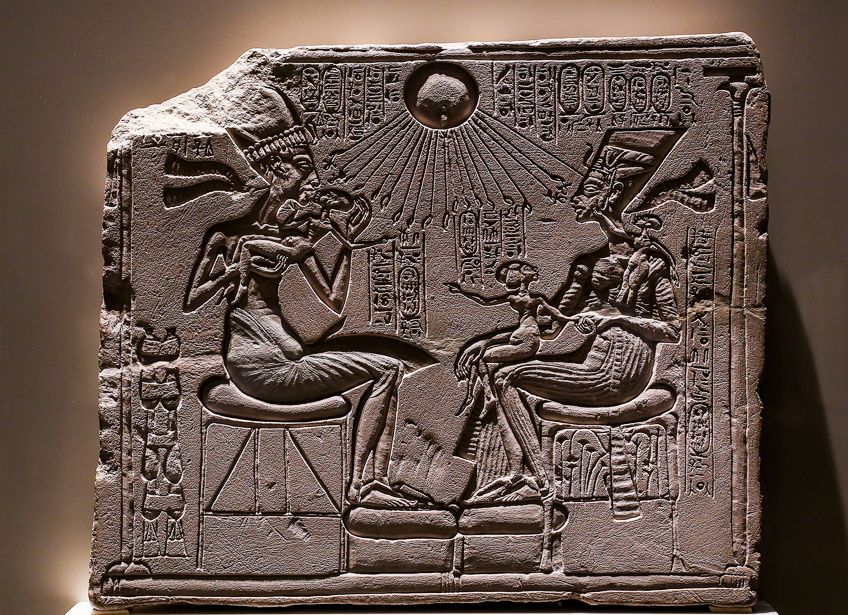
This concept of duality was essentially regulated by this harmony, with all Egyptian artworks, temples, homes, palaces, and gardens being created with balance in mind in order to reflect the value of symmetry. Egyptians believed that their land was made in the image of the world of the gods and that when someone passed away, they would return to an afterlife and paradise that was somewhat familiar.
Thus, all art and architectural objects were intentionally laid out to express the perfect harmony that the gods began at creation.
Types of Egyptian Art
All artworks created within ancient Egypt were done to reflect the perfection of the gods, deities, and pharaohs at the time. In addition to existing as beautiful works of art, these artworks served a practical purpose on a daily basis. The most common types of Egyptian art that came from this era of history were Egyptian paintings, drawings, and sculptures, which we will be discussing below.
Egyptian Paintings
The majority of the surviving paintings to come from Egypt were produced during the early dynastic period, hence the strong emphasis on life after death that is seen. Great preservation of past knowledge is depicted in all of the ancient Egyptian artworks, with these paintings surviving thousands of years thanks to Egypt’s incredibly dry climate. Another reason that Egyptian paintings have been so durable is that many of them were designed to decorate the inside of tombs, meaning that they have been well-protected for centuries.
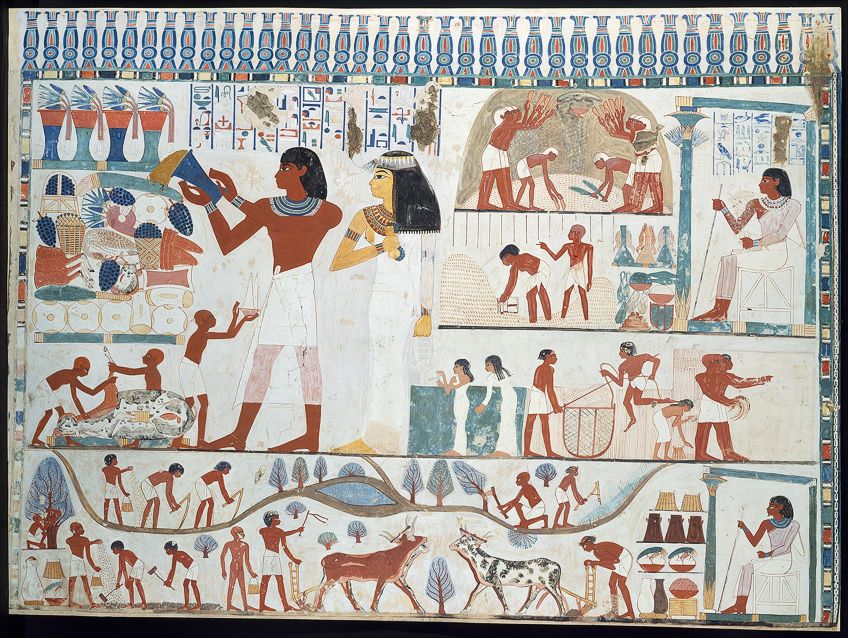
Despite some paintings existing for over 4000 years, the colors have remained extremely vibrant in the works that have been found and excavated. The purpose of these paintings was to create a pleasant afterlife for the deceased in their tombs, thus the themes traditionally seen in these artworks followed the concepts of the afterlife and protective deities. Some paintings even showed specific activities that the person enjoyed doing that they wished to carry on doing forever.
Egyptian paintings showed off the profile and side view of the individual or animal that was being captured.
This technique was called a composite view and was painted using specific bright colors, like red, black, blue, green, and gold, which was then was mixed with egg whites so as to stick to the surface. Another technique that was a distinctive feature of Egyptian paintings was that of a sunk relief, which was used in more prestigious tomb works. These reliefs were well-suited to bright sunlight as they could withstand the strong sun without fading over time.
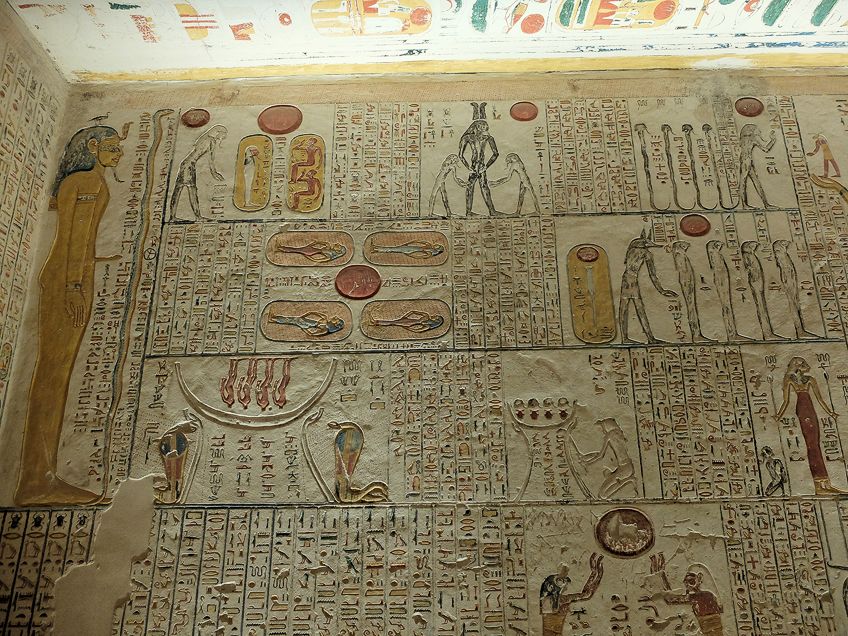
The relief paintings found within tombs were both high reliefs, where figures stood out from the wall, and low reliefs, where figures were actually carved into the wall. In order to create these types of paintings, the surface would be smoothed over and sanded. Artists would first create a miniature to refer back to before drawing grid lines onto the wall so as to replicate their work.
These paintings would first be outlined in red paint, with corrections by other artists being done in black paint, before the final artwork was created.
Egyptian Drawings
One of the most well-known types of drawings to come out of ancient Egypt was hieroglyphics. Existing as a form of pictorial writing and drawing, hieroglyphics had an inherent sense of aesthetic beauty. These symbols were typically used on ancient Egyptian monuments as a way to describe what the artwork meant. However, instead of acting as a direct translation of what the object was, hieroglyphics stood for specific sounds and groups of sounds in order to explain a work.
As they were seen as beautifully intricate, hieroglyphics are easily classified as another type of Egyptian drawings. Despite their simple form, hieroglyphics were an incredibly complex form of drawing and writing. Sentences could either start from the left or right and be read from the top or bottom depending on how it would affect the elegance of the completed artwork.
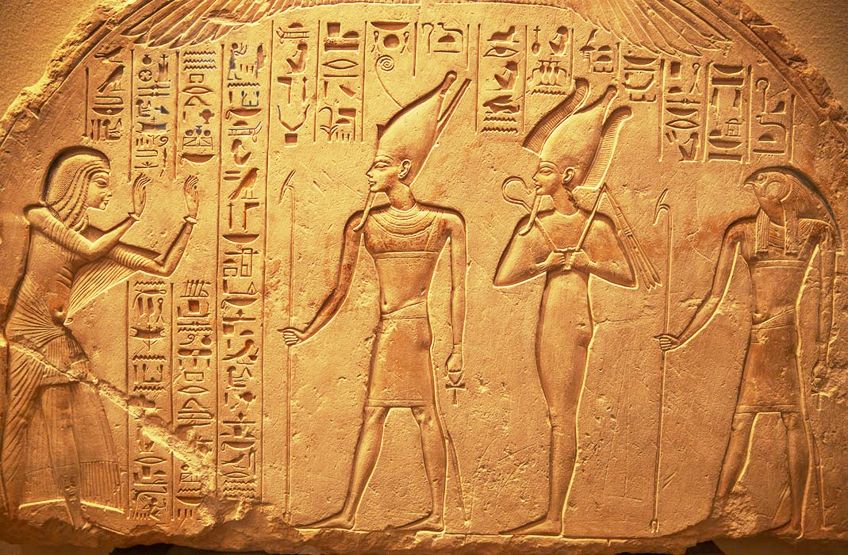
Due to the fact that Egyptian hieroglyphics were so confusing to read, an easy connection between the traditional alphabet and the hieroglyphic symbols could not be made, as they encompassed two completely different languages. Over time, many historians have come up with a simplified translation of Western letters to hieroglyphics, so some sense and understanding can be drawn from these artworks.
Thus, every time a word was spelled out, these drawings would be used to convey the information to those reading the hieroglyphics.
Egyptian Sculpture
Most Egyptian sculpture was created during the early dynastic period. Sculptures were typically carved as both sunken and low reliefs, as they adhered to the same conventions that governed Egyptian painting and were able to withstand the force of the sun. Figures who are not seated in sculptures were characteristically portrayed with parted legs, their heads in profile, and their torsos turned to directly face individuals. This was because they were made to directly confront the rituals being conducted before them in tombs.
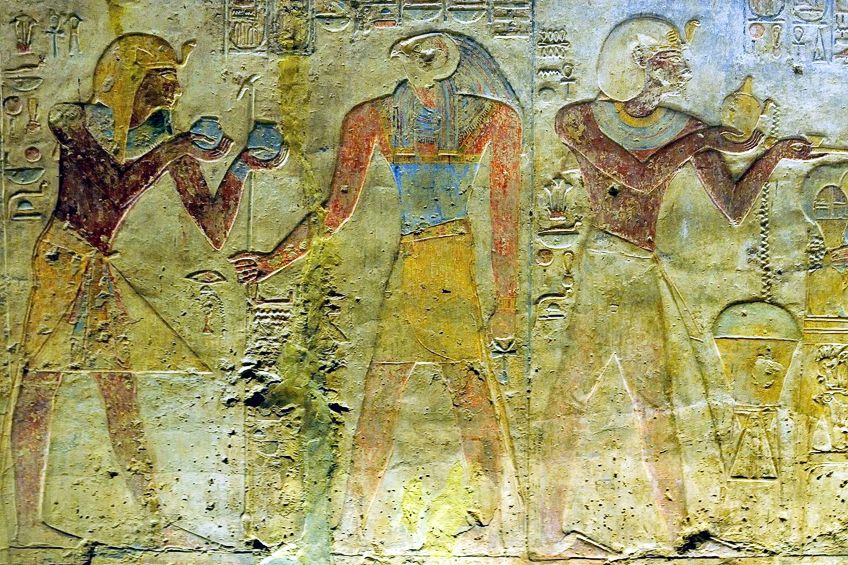
Strict rules were followed when crafting statues, as every god had rules for how their appearance was depicted. For example, the god of the sky, Horus, was always depicted with a falcon’s head no matter who carved him. As all artists had to follow the same rules, their works were ranked according to their conformity with these features. Due to these rules hardly changing, the appearance of Egyptian sculptures did not change in over 3000 years. This was also intended to convey the permanence and non-aging qualities of the gods.
However, out of all the sculptures ever made, the most iconic ones to come from ancient Egypt were indeed the inexplicable Great Pyramids.
Standing on a natural stone shelf that is known as the Giza plateau today, these pyramids have existed as burial places, memorials, and sites of worship for deceased rulers. Out of the pyramids that were constructed, three are deemed to be the most important. The largest was made for King Khufu, the middle-sized one was made for his son, Khafre, and the smallest belonged to his grandson, Menkaure.
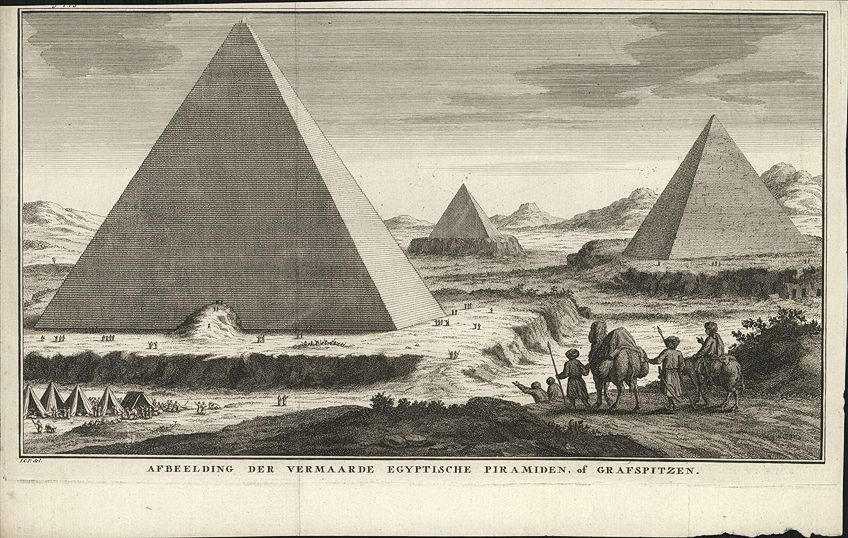
Iconic Egyptian Artwork
Throughout history, many astounding Egyptian artworks have been unearthed in various temples and tombs. Due to the extensive archeological excavations that have occurred in Egypt throughout the decades, with these digs supposedly dating back to the mid-1880s, very comprehensive collections of Egyptian artworks have been put together. Out of all these artifacts that have been found, the most iconic Egyptian artworks to ever exist remain the pyramids, with worldwide fascination surrounding these structures constantly growing.
The Great Pyramids of Giza
Classified as one of the seven wonders of the ancient world, the great pyramids of Giza are perhaps the most renowned and talked-about structures in history. For thousands of years, these gigantic monuments were unmatched in height, as individuals marveled over their unique and complicated construction, as they seemed almost too perfect to be real.
Research has shown that the construction of the pyramids of Giza was the result of trial and error, with its success representing the pinnacle in the development of the royal mortuary complex.
As they were intended for the rulers of Egypt, they were built over the span of three generations for the pharaoh’s Khufu, his son Khafre, and his grandson Menkaure. The proximity of these pyramids to one another was important, as being buried near the pharaoh was seen as an extreme honor and supposedly ensured an esteemed place in the afterlife.
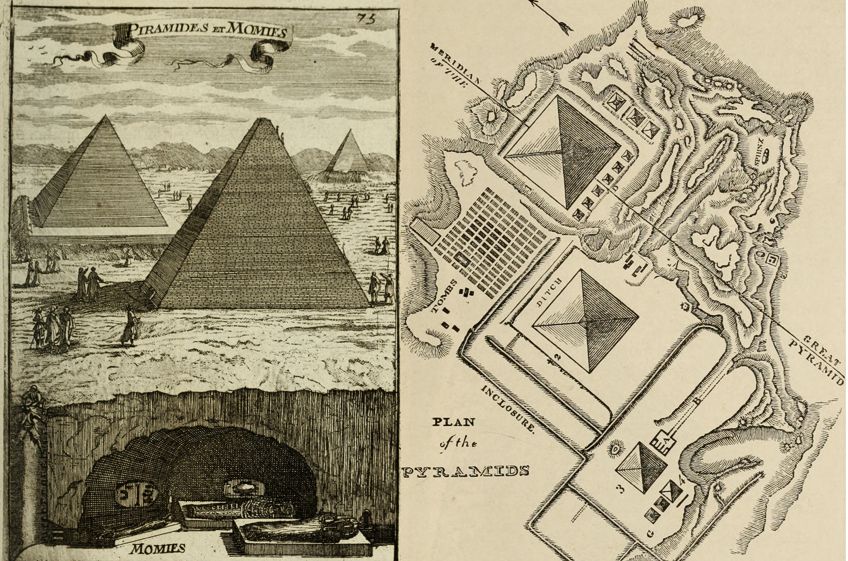
The Great Pyramids of Giza. LEFT: Illustration from Description de l’univers (1683) depicting the Great Pyramids aboveground and one of the many tombs beneath; Internet Archive Book Images, No restrictions, via Wikimedia Commons. RIGHT: A plan of the three Great Pyramids of Giza, illustrating their proximity to one another, from the Handbook of Archaeology (1867); Internet Archive Book Images, No restrictions, via Wikimedia Commons
Throughout the decades, many questions have remained about the construction of these pyramids. The discovery of a town for workers to the south of the Giza plateau has provided some answers, as the individuals were thought to make up the permanent group of craftsmen and builders who worked on the pyramids. It has been estimated that roughly 20 000 workers helped build the pyramids, with about 340 small stones being moved daily from the quarry to the construction site during the 20 years it took to complete.
The shape of the pyramids of Giza was thought to be a reference to the sun and the angle of its rays. The final point on top of the structure was seen as a ramp for the pharaoh to mount into the sky. Despite their colossal size, the pyramids are unfortunately not permanent.
With the rapid growth that Cairo is experiencing, these structures will need increased consideration and safeguarding if they are to remain intact as vital benchmarks of ancient Egyptian art.
Pyramid of Khufu
Also called the Great Pyramid, the largest of the Giza pyramids was intended for Pharaoh Khufu. With a height of 146 meters and a base length of more than 230 meters per side, the pyramid of Khufu is regarded as an astounding engineering achievement. What makes this pyramid so fascinating is its inner and outer casting stones, with an estimated 2 300 000 blocks of stone weighing up to 50 tons thought to have been used.
Following his predecessors, the pyramid of Khufu was made up of rough inner stones that were locally quarried and laid horizontally with spaces that were later filled with plaster. While originally built with outer casting stones, these have since been carefully removed, along with a capstone that used to sit at the very top point of the pyramid. Unfortunately, both the outer stones and the capstone would have made the pyramid visible from a greater distance if they were still there today, as they would have dazzled in the intense sunlight.

The interior passageways of the pyramid of Khufu add to its uniqueness, as various puzzling features exist within this structure. One of these features is an unfinished chamber whose function remains unknown, and several “air shafts” that fan out from the upper chambers. In recent times, these peculiarities have been explored through the use of small robots, but a series of blocking stones have prevented further investigation into certain passages.
When entering the pyramid, one has to climb up a narrow ascending chamber that opens into the Grand Gallery.
Once here, a passage leads into the King’s Chamber that was made entirely from red granite. Here, Khufu’s sarcophagus, which was sculpted from red granite, was found at the central axis of the pyramid. Additionally, seven large brick-lined boat pits were located in the pyramid of Khufu, which were thought to transport the King to outstanding destinations in his afterlife.
Pyramid of Khafre
The second great pyramid, known as the pyramid of Khafre, was built by Pharaoh Khufu’s second son, Khafre. Existing as quite a large structure, the pyramid of Khafre initially appeared larger than that of his father’s but is in fact somewhat smaller. The reason for its gigantic appearance was that it was actually constructed about 10 meters higher on the Giza plateau than both of the other two great pyramids.
Due to this, the interior of the pyramid is much smaller and simpler than the pyramid of Khufu. Only a single burial chamber was built, along with one small secondary chamber and two passageways. However, the place that the pyramid of Khafre appears to be more complex in design is in the mortuary temple at the base, as it exists as the more intricate structure when compared to the pyramid of Khufu.
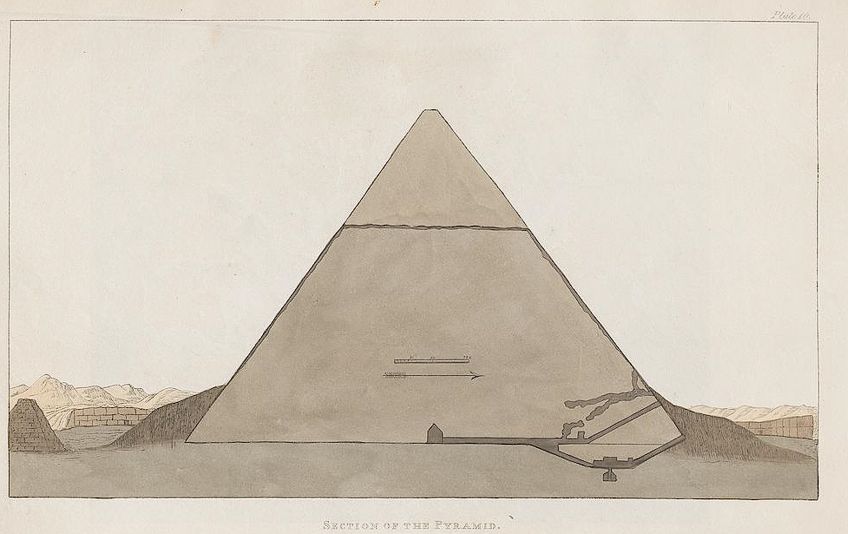
Within the base, more than 52 statues of Khafre were found which filled the available space. These sculptures and images were either depicted as life-sized or larger, which represented the true prominence of the king. Upon excavation, statue bases indicated that an extra 24 images of the pharaoh were originally placed in this temple but were no longer there.
Due to its location at the east end, the pyramid’s valley temple has been stunningly protected and maintained over time.
Pyramid of Menkaure
The third pyramid that made up the trio of the great pyramids of Giza belonged to Menkaure, the son of Khafre and the grandson of King Khufu. As it is the smallest of the three structures, the height of the pyramid only reaches 65 meters. Despite this, the pyramid of Menkaure has managed to preserve some of the most beautiful examples of sculpture to come from Egyptian history today.
The chambers of the pyramid of Menkaure are known to be more complex than the chambers in the pyramid of Khufu. This is because they include a chamber that was sculpted with decorative panels and another chamber with six large alcoves. The burial chamber, which housed Menkaure’s embalmed body was lined with gigantic granite blocks, with his sarcophagus being carved with hollow panels as well.
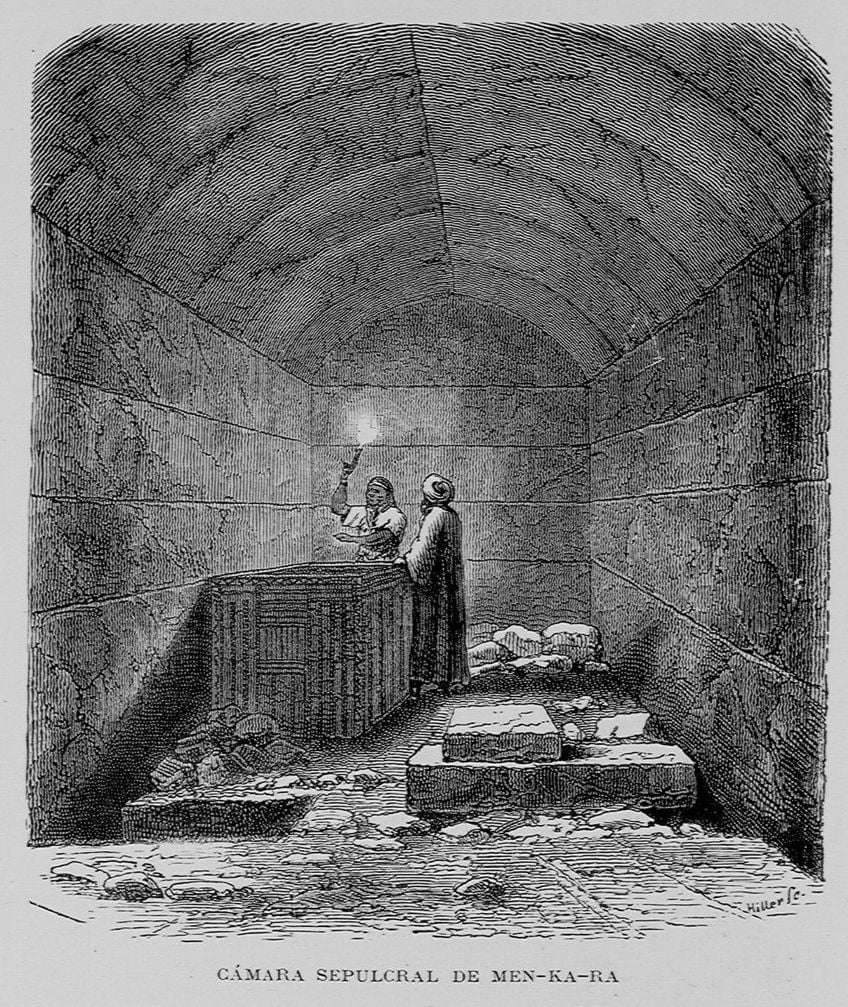
While Menkaure’s pyramid was being excavated, it was discovered that neither his mortuary nor valley temples were ever completed before he died. Within these chambers, a series of statues of the king were found, including a magnificent diad of him with his main queen, Khamerernebty II, and various triads that depicted Menkaure being embraced by several deities.
The story of Menkaure’s sarcophagus is an interesting one, as it was considered to be an important discovery when it was first found. However, while it was being transported back to England by boat, the sarcophagus was lost at sea during a storm. This has led to Menkaure being considered as one of history’s most important vanished treasures today. Additionally, the actual structure of the pyramid faced serious damage after a flood at the end of the 6th dynasty and was almost entirely rebuilt.
The Great Sphinx
Carved from the bedrock of the Giza plateau is the Great Sphinx, which is the 4500-year-old limestone statue that sits near the entrance to the great pyramids leading from Khafre’s valley temple into the mortuary. Measuring 20 meters high and 73 meters long, the Great Sphinx exists as one of the world’s largest and most iconic monuments, in addition to being one of the most identifiable relics constructed by the ancient Egyptians.
Within ancient history, a sphinx was a creature that had the body of a lion and the head of a human.
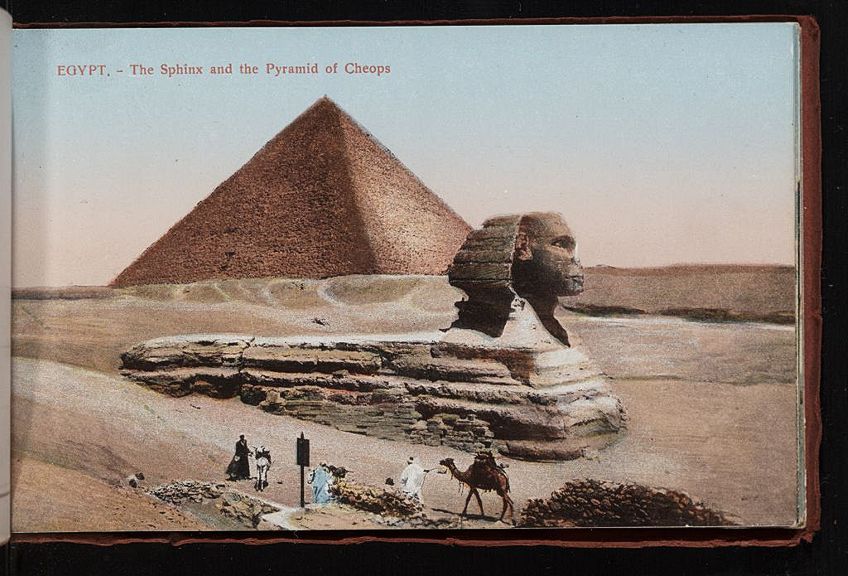
Existing as a prominent figure in Egyptian, Asian, and Greek mythology, the Great Sphinx is steeped in legend and folklore. In Egyptian history, a sphinx was thought to be a spiritual guardian and was mostly portrayed as a male wearing a pharaoh headdress. Due to its proximity to Khafre’s pyramid and its slight resemblance to the pharaoh, the Great Sphinx was said to have been carved specifically for the king to offer protection.
As the pyramid of Khafre was surrounded by the great Sphinx and other statues, some scholars have stated that a celestial purpose explains the location of the Great Sphinx to Khafre’s mortuary. As the lion was a royal symbol that was connected to the sun, it has been suggested that the Great Sphinx was there to resurrect the soul of Khafre by channeling the power of the sun and other gods. Despite being just a theory, this provides a plausible explanation for the structure’s closeness to the pyramid.

The Great Sphinx exists as one of the most interesting ancient Egyptian artworks, as so much is still speculated about it.
It has been debated that the Sphinx is actually far older than what is widely believed, based on the patterns of erosion present on the structure. Additionally, as the word “sphinx” only originated in Greek mythology about 2000 years after the structure’s completion, it remains unknown as to what the ancient Egyptian’s called it.
Tutankhamun’s Tomb
One of the most popular stories of ancient Egypt was the story of Tutankhamun becoming pharaoh at the age of only nine years old. Discovered in 1922, the excavation of Tutankhamun’s tomb in the Valley of the Kings is seen as one of the most valuable archeological sites that have been found in Egypt. However, the story of Tutankhamun was almost completely lost to history as the archeologist, Howard Carter, who discovered his tomb ran out of financial backing and almost did not excavate at this site.
Upon discovery, the tomb was nearly intact and was home to a wealth of objects.
These finds have given historians and scholars an even closer and more unique insight into this specific period of the 18th dynasty of the New Kingdom when King Tutankhamun ruled. His time ruling Egypt was rather complex and short-lived, as Tutankhamun married his half-sister Ankhesenamun, did not produce any heirs, and died at the young age of eighteen. Manners of his death have been widely speculated and today, the answer remains a mystery still.

Tutankhamun’s tomb was robbed and resealed twice after it was initially completed, with these robberies apparently hurrying up the construction of the tomb. Due to this, the tomb was found to be densely packed with items in great disorder as it was small in size, as the robberies forced workers to seal the structure almost immediately. Said to have been entered two more times after his mummy was buried, rumors have circulated about the “Curse of the Pharaoh” that face intruders who attempt to violate the king’s final resting place.
It took eight years to fully empty Tutankhamun’s tomb due to the sheer number of objects found and Carter’s meticulous recording process.
Within his sarcophagus, an innermost coffin was found, as three coffins held the body of Tutankhamun. The outer two coffins were made from wood and coated in gold and semiprecious stones, including lapis lazuli and turquoise. The innermost coffin proved to be the most extravagant and valuable, as it was cast in solid gold.
When the coffin was originally found, it was not the shiny golden image that we know today. Carter wrote in his notes that the coffin appeared to be covered in a thick black layer from the hands down to the ankles. This was an anointing liquid, which was poured over during the burial to preserve it. Perhaps the most iconic object found within the tomb was the death mask of Tutankhamun. Seen as one of the masterpieces of ancient Egyptian art, the mask originally rested on the shoulders of the mummy of Tutankhamun inside the gold coffin.

The mask portrays Tutankhamun to be wearing a striped cloth Nemes headdress, which was traditionally worn by pharaohs in ancient Egypt, with the goddesses Nekhbet and Wadjet shown to be protecting his brow. The fake beard that is seen was said to connect Tutankhamun to the image of a god, with the back of the mask being covered with Spell 151b from the Book of the Dead. This was used by ancient Egyptians as a guideline for the afterlife and was used to protect the body of Tutankhamun as he moved into the underworld.
Influence and Legacy of Egyptian Art
Ancient Egyptian art existed as an incredibly important period of art that went on to influence the European understanding, technique, and style which would be observed for the next 1000 years or so. The features and characteristics that are taken from Egyptian art only demonstrated a change in the late 19th and early 20th century, when Italian artists formed the futurist group and began to separate themselves from past ideals.
The beginning of modern art in society forced individuals to recognize the preconceptions that existed around art so that a break from past styles and techniques could begin.
This led to some Egyptian art coming under criticism as it was considered to be unpolished according to new standards, despite being famously adored and respected for so many years prior. Some critics went as far as to say that Egyptians never truly learned the element of perspective, as no interaction of light and shadow was seen in the artworks found.

Additionally, other Egyptian artwork began to be targeted as the world of art started to move in a completely new direction, as works were seen as two-dimensional and emotionless. Even iconic statues that were previously praised, such as sculptures depicting battle scenes, kings, and queens, were labeled as impassive and cold and therefore not fitting for the new genre of art.
However, what these critiques failed to recognize was the functionality of Egyptian art. Artists understood the importance of emotions, but also knew that they were a temporary state. Thus, depicting statues and paintings with one single emotion would have led to an inauthentic artwork being created as individuals were not consistently happy or sad, and a false scene would rest in one’s tomb for all eternity. Due to this, Egyptian art demonstrated an elevated knowledge about including the transient nature of emotion in artworks.
In essence, Egyptians saw life as only the smaller part of an eternal journey that all individuals would embark on, with Egyptian art accurately reflecting these beliefs. This led to artworks that were made to withstand the test of time, allowing society today to look back at and consider artworks that existed thousands of years ago. The influence of Egyptian art on the current artistic society has proved to be invaluable, as the values and beliefs of Egyptian artists have gone on to inform the basic premise of what art stands for today.
Take a look at our ancient Egyptian art webstory here!
Frequently Asked Questions About Egyptian Art
What Is Egyptian Art?
Dating back to the pre-dynastic period, Egyptian art has developed for thousands of years within Egypt. Initially, art was reserved for the wealthy elite and the pharaohs who ruled Egypt, meaning that only those who could afford artworks had access to them. Existing as an art form that primarily served a purpose, Egyptian art prioritized function over aesthetic beauty as art was made to help those who passed away along the journey of entering into their eternal afterlife.
What Were the Important Characteristics of Egyptian Art?
As artworks were made for a specific objective, Egyptian artists generally made use of the same important characteristics within their works so as to accurately achieve their desired goal. These characteristics included the utilization of anonymity, symmetry, and symbolism. If all of these elements were effectively combined, artworks that were truly Egyptian in style were considered to be made.
What Are Some of the Most Famous Examples of Egyptian Art?
Some of the most iconic examples of Egyptian art are the sculptural figures and objects that were made. These include the great pyramids of Giza, the pyramid of Khufu, the pyramid of Khafre, the pyramid of Menkaure, the Great Sphinx, and Tutankhamun’s tomb.
Isabella studied at the University of Cape Town in South Africa and graduated with a Bachelor of Arts majoring in English Literature & Language and Psychology. Throughout her undergraduate years, she took Art History as an additional subject and absolutely loved it. Building on from her art history knowledge that began in high school, art has always been a particular area of fascination for her. From learning about artworks previously unknown to her, or sharpening her existing understanding of specific works, the ability to continue learning within this interesting sphere excites her greatly.
Her focal points of interest in art history encompass profiling specific artists and art movements, as it is these areas where she is able to really dig deep into the rich narrative of the art world. Additionally, she particularly enjoys exploring the different artistic styles of the 20th century, as well as the important impact that female artists have had on the development of art history.
Learn more about Isabella Meyer and the Art in Context Team.
Cite this Article
Isabella, Meyer, “Egyptian Art – The Rich Art History of Ancient Egypt.” Art in Context. July 14, 2021. URL: https://artincontext.org/egyptian-art/
Meyer, I. (2021, 14 July). Egyptian Art – The Rich Art History of Ancient Egypt. Art in Context. https://artincontext.org/egyptian-art/
Meyer, Isabella. “Egyptian Art – The Rich Art History of Ancient Egypt.” Art in Context, July 14, 2021. https://artincontext.org/egyptian-art/.






